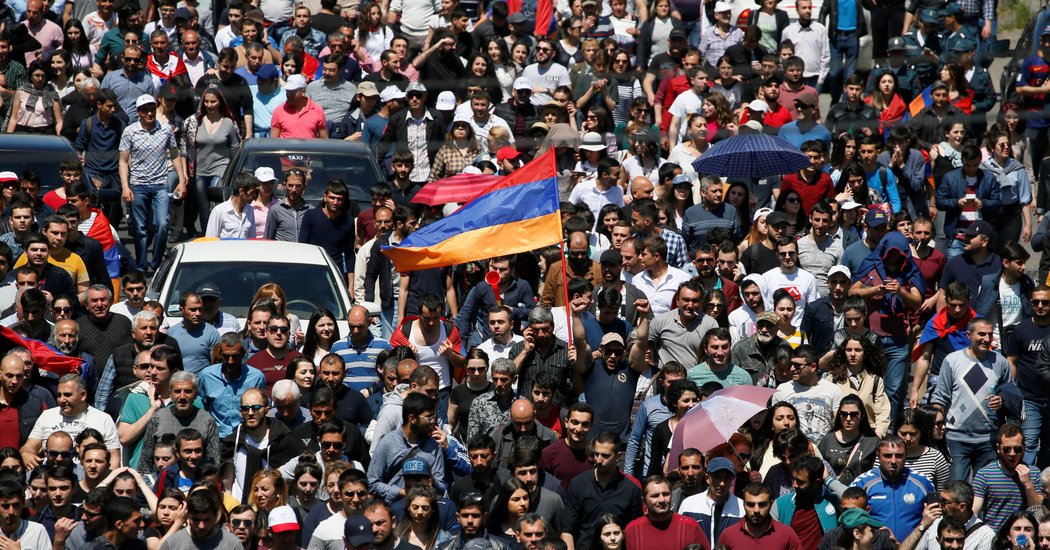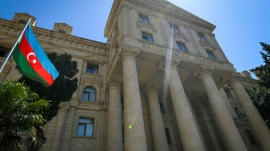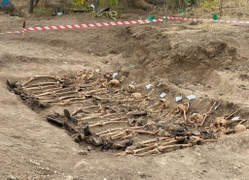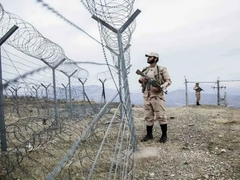Russian President Vladimir Putin and Armenian Acting Prime Minister Karen Karapetyan spoke over the phone on Thursday about the unrest in Yerevan that has rocked the city since Prime Minister Serzh Sargsyan resigned amid a public outcry. According to the Kremlin’s official website, Russian officials maintain that the political crisis in Armenia – a close ally of Russia and a former Soviet republic - should be resolved only by legal means.
"It was highlighted that the crisis situation in Armenia must be settled exclusively within the framework of the law, the current constitution and on the basis of the results of the April 2017 legitimate parliamentary election. In this context, the importance of the election of the republic's prime minister by parliament, scheduled for May 1, 2018, was underscored," the statement reads.
After nearly two weeks of anti-government protests, Armenian Prime Minister Serzh Sargsyan was forced to resign. Experts say none of this seemed even remotely possible just one month ago.
The success of the protesters is a surprise not only to analysts but even leaders. When the protests started, the most the protest leaders could have hoped for was to unify the opposition and put a spoke in then-prime minister’s wheel and harm his legitimacy.
Official Russian TV coverage of the opposition protests in Armenia have gone through phases. Prior to Prime Minister Serzh Sargsyan’s resignation on April 23, coverage gave the impression that the protests in Armenia were fairly restricted and the government was in full control of the situation.
After Sargsyan’s resignation newscasters on Russia’s state-run Channel One stressed that what is unfolding in Armenia is not a rerun of Ukraine’s Euromaidan protests that had resulted in then-President Viktor Yanukovych being booted out of office, in 2014.
Subsequently, coverage of the Armenia protests has been cautious, stressing that the future of the country is a matter for the people of Armenia, while warning that any political changes should be guided by the constitution.
Repeating the Kremlin line on the importance of dialogue to overcome the situation, Channel One and Rossiya 1 hardened their attitudes towards protest leader Nikol Pashinyan and his supporters ahead of the May 1 parliamentary voting to elect a new prime minister.
Main news bulletins Wednesday and Thursday came down on protest leader and parliamentarian Pashinyan for wanting to bend to his will the constitution, accused of looking to dictate terms to his political rivals. Channel One reported that Pashinyan is, “unhappy with the constitutional norm" and wanted the vote for a new prime minister to "take place on the streets.”
Channel One also recapitulated Pashinyan's career, saying he was the editor of a "radical opposition newspaper,” that he was jailed for his role in "mass disorders," and is an opponent of the Eurasian Economic Union, the Kremlin's cross-border economic project that looks to unify certain post-Soviet states.
On April 25, Rossiya 1 accused the opposition of "setting ultimatums" and of being dead against dialogue with their opponents. Reports early the next day were similar in tone, saying that the opposition activists wanted Pashinyan to be prime minister "right now" and "without any conditions.”
Talk shows hosts on Russian state TV channels opined that the protests in Armenia that led to the resignation of the prime minister are not a replay of the Maidan protests in Ukraine, and have not been inspired by the U.S. in any way.
However, discussing Armenian protests on Channel One's weekday talk show, Vremya Pokazhet (“Time Will Tell”), historian Aleksandr Soghomonyan suggested that the prime minister quit after a phone call from Washington.
"Are you saying that all those people, Armenian citizens, who were unhappy with Sargsyan's rule and took to the streets, also get phone calls from the U.S.?", a presenter asked sarcastically.
In remarks about developments, historian Aleksandr Soghomonyan says the demise of the USSR and the eastern bloc marked the beginning of a rapid expansion of western - primarily American - networks of influence in Eastern Europe and the territories that made up the former Soviet Union, including Armenia.
Considering the presence of a significant Armenian diaspora in the United States, penetration into Armenia proved to be an easy task and, in Soghomonyan’s opinion, everything began with the elites.
Aleksandr Soghomonyan underscored the role of NGOs in Armenian protests. Around 3,000 NGOs that operate in the country are recipients of western foundations, meaning one NGO for every 1,000 people. In addition, some experts and the media claim the U.S. has 2,500 diplomats in Armenia, or one for every 1,200 Armenian citizens. By comparison, in Russia, the number of American diplomats is around 400 people, according to reports posted to Tsargrad TV’s website.
Soghomonyan believes such attention from Washington and global elites is understandable since Armenia remains the last former Caucasus republic where Russia retains a military base and a significant amount of influence.
“This process began with the collapse of the Soviet Union. The first president, Ter-Petrosyan, was pro-American. He made a lot of mistakes. Then reform was carried out in Armenia, it became a parliamentary republic. By and large, everything that happened then was part of the U.S. global plan to cut off former Soviet republics from Russia," he said.







 Azerbaijan, Uzbekistan, and Kazakhstan are planning to merge their energy systems following a historic memorandum of understanding (MoU) signed by ...
Azerbaijan, Uzbekistan, and Kazakhstan are planning to merge their energy systems following a historic memorandum of understanding (MoU) signed by ...
 President Ilham Aliyev praised Azerbaijan’s cultural diversity as a key factor in fostering peace, stability, and unity within the country, where a...
President Ilham Aliyev praised Azerbaijan’s cultural diversity as a key factor in fostering peace, stability, and unity within the country, where a...
 Iran is moving to fortify its eastern border with Afghanistan in a bid to fight illegal migration and drug trafficking, along with enhancing security.
Iran is moving to fortify its eastern border with Afghanistan in a bid to fight illegal migration and drug trafficking, along with enhancing security.
 The Chief of the Atomic Energy Organisation of Iran (AEOI) said that the country has allowed more than 130 inspectors of the International Atomic E...
The Chief of the Atomic Energy Organisation of Iran (AEOI) said that the country has allowed more than 130 inspectors of the International Atomic E...
 Ulviyya Fataliyeva, a female Azerbaijani chess grandmaster, was crowned this week at the European Women’s Chess Championship (EWCC) in Rhodes, Gree...
Ulviyya Fataliyeva, a female Azerbaijani chess grandmaster, was crowned this week at the European Women’s Chess Championship (EWCC) in Rhodes, Gree...



